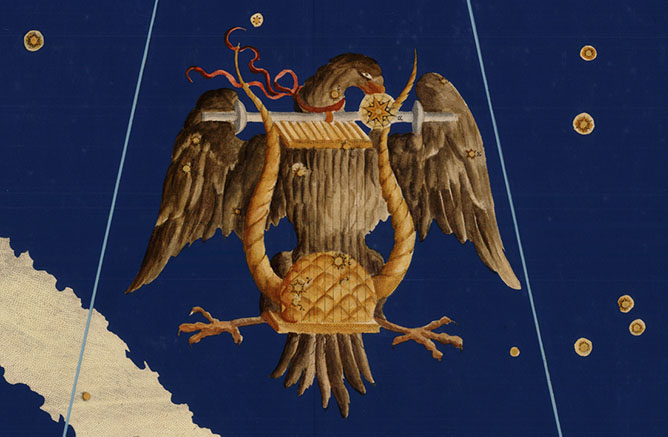Lyra: The Lyre
Pronunciation: LYE-ruh
| Lyra Constellation Profile | |
|---|---|
| Abbreviation: Lyr | Genitive: Lyrae |
| Origin: Ancient | Location: Northern Hemisphere |
| Best View (North): Summer | Best View (South): |
| Bordering Constellations: Draco, Hercules, Vulpecula, Cygnus | |
The Myth Behind the Constellation Lyra
Lyra, “The Lyre” is the musical instrument invented by Hermes. It was given to Apollo who later gave it to his son Orpheus. Orpheus became so skilled at playing it that birds, beasts, trees, rivers and rocks would gather to hear him. Women were especially captivated, but he was passionately in love with his wife, Eurydice. When she died, he traveled to the underworld and with his song convinced Hades to let him take her back to the world of the living. In the end he lost her a second time. Heartbroken and still in love with his wife, he was eventually killed by a group of young women he had refused. He was finally reunited with his wife and Zeus put his lyre in the sky.Lyra Constellation Points of Interest
| Interesting Objects in the Constellation Lyra | ||||
|---|---|---|---|---|
| Name | Messier | NGC | Type | Visibility |
| M56 | NGC 6779 | Globular Cluster | Binoculars | |
| Ring Nebula | M57 | NGC 6720 | Planetary Nebula | Binoculars |
Bright Stars in Lyra
These are the stars in Lyra with a minimum magnitude of 3.0.| Name | Bayer Name | Magnitude | Color | Luminosity | Distance |
|---|---|---|---|---|---|
| Vega | Alpha Lyrae | 0.03 | White | 61 suns | 25 ly |